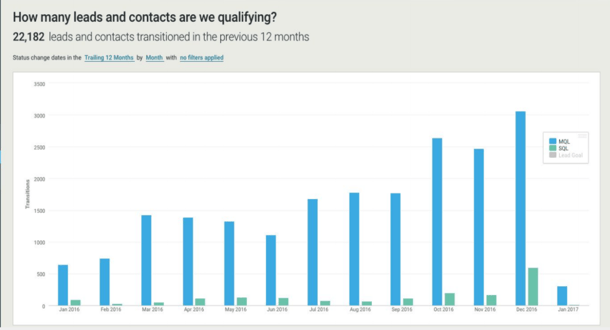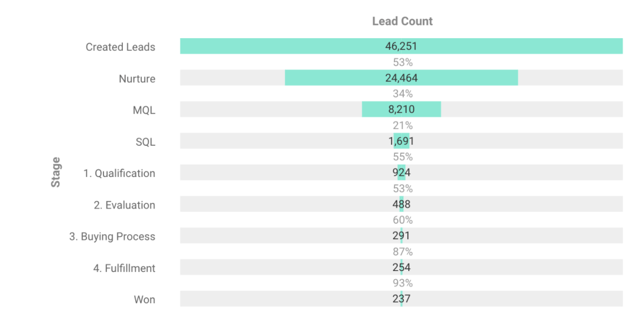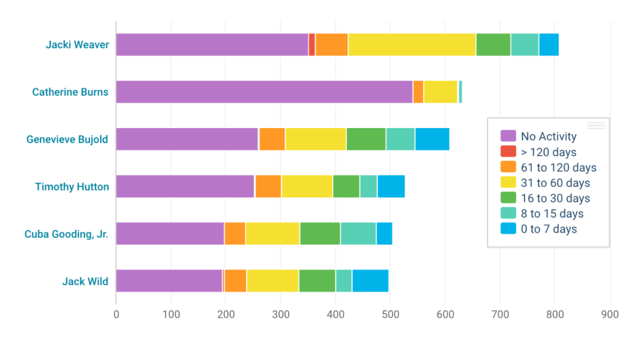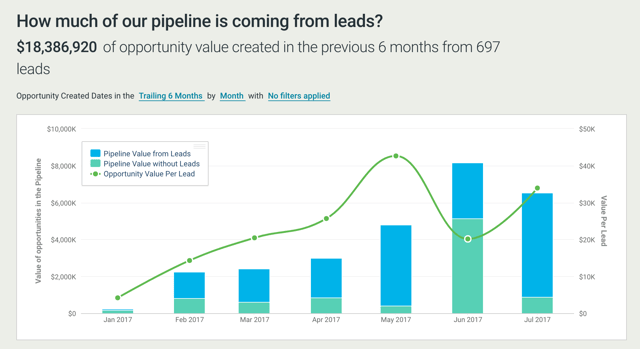
Any inbound marketer knows that marketing and sales alignment is essential for success. Any inbound marketer also knows that achieving this alignment is not as easy as it looks and takes a great deal of collaboration and commitment from both teams.
While dedication to marketing and sales unification is important, achieving inbound marketing success doesn’t stop there. Unfortunately, collaboration alone doesn’t show that your actions are driving positive results. It’s metrics that prove whether or not your sales and marketing efforts are paying off. Not only are metrics necessary for proving your efforts to be valuable, they hold marketing and sales teams accountable to each other and enable each team to identify company-wide strengths and weaknesses.
The Top KPI You Should Prioritize
Marketers and salespeople are constantly being bombarded with all sorts of metrics, KPIs and benchmarks that are supposedly the keys to measuring success. However, what many don’t realize is that there is only one metric that truly matters - bookings. Whether you're on the marketing or sales side, bookings should be your top priority.
So how do you define bookings? Bookings represent the dollar amount that a customer has committed to spending on your product or service. Ultimately, bookings is the number that drives revenue so it’s a no-brainer that both marketing and sales should be held accountable for this one KPI.
Measuring overall bookings indicates how your marketing and sales teams are working in collaboration to drive your company’s bottom line. By analyzing bookings by source, you gain insight as to how each team is working independently and where your total revenue is coming from. Typically we think of marketing sources as Organic, Direct, Email, Social, and paid whereas sales sources are more often Offline or Referrals.
When analyzing marketing versus sales sourced bookings, consider these questions:
- How many booked deals have been sourced from marketing versus sales?
- What is marketing’s influence on closed deals in comparison to sales’ influence on closed deals?
Too often, marketing and sales teams experience a disconnect due to differences in priority. By holding marketing and sales accountable to the same KPI, you can unify them rather than drive them apart.
Working towards a common goal will create unity and camaraderie among your marketing and sales teams as well as ensure that your company’s bottom line always stays top of mind. Once you realize that bookings is the primary KPI for both marketing and sales, you’re one step closer to achieving real revenue growth.
Why You Need Leading Indicator Reports
While Bookings should remain your single most important KPI, it's leading indicators that are going to influence your day to day tactics. Leading Indicators aren’t considered a KPI, but they are important to track for real-time change. Leading indicator reports allow for a holistic view of your marketing and sales funnel in real time and can identify which areas need support. Additionally, comparing your funnel and leading indicator metrics to industry benchmarks will make it apparent where bottlenecks live.
So, what differentiates a leading indicator from a KPI? Ideally, your team should have as few KPIs as possible, all of them being revenue-oriented. In contrast, your team may have quite a few leading indicators, all of which will analyze the day-to-day tactics that ultimately affect revenue.
A leading indicator report allows you to make in-period strategy changes based on how things are trending. A KPI is a method of proving the results of your efforts whereas leading indicators act as predictive metrics to support a KPI. Using leading indicators will help your team anticipate whether or not they will meet their chosen KPI.
Here are some examples of common leading indicators:
-
Lead Counts

- Site Traffic
- Lead Funnel

- MQL to SQL Conversion Rate (Funnel Metrics)
- Lead Aging (By employee)

- Pipeline

Overall, leading indicators help your marketing team see where their best leads are coming from and distribute more of them to sales. In turn, your sales team will know which leads and lead stages to focus on. By tracking these metrics using a tool like InsightSquared, you’ll have the data required to spot bottlenecks and fix them in real time.
Data-Driven Decision Making
Not every business decision you make has to be stressful. When it comes to marketing and sales operations, let the data do the work. Using data-driven decision making can take the guesswork out of your marketing and sales strategy and drive revenue.
Real Client Example:
We successfully used data-driven decision making to increase a recent client’s close-rate and ultimately drive bookings. After noticing a steady decline in the client’s close-rate, we used the data available to analyze the issue and provide a solution. After looking at all the different factors that could potentially influence the client’s close-rate, it was found that out of the five buyer personas this client used, three of them boasted a 30% close-rate while the remaining two personas had a close-rate of only 8%. From this, we concluded that the two personas with the rock bottom close rates should be deemed negative personas to be avoided.
With this advice, the client established the two personas as negative and stopped trying to sell to them. Due to the trickle-down effect, the client had to reevaluate aspects in their marketing and sales funnel that could have lead to these types of negative leads coming through in the first place. This could have been anything from an issue with marketing’s content strategy to a sales qualification error.
Fortunately, by analyzing the data and eliminating the two negative personas, the client was able to increase their close-rate and eventually drive more revenue.
Having the ability to perform an analysis and make informed decisions based on real results is essential to achieving success for both you and your clients. If you make your decisions with data in mind, revenue growth will follow.
To sum it up:
- Your top KPI should be Bookings followed by Marketing and Sales Sourced Bookings
- Leading Indicators are essential for tracking real-time change and identifying bottlenecks
- Using data to inform your decisions is key to revenue growth
Get a more detailed overview of this post by downloading our full recording below on the marketing and sales metrics you need for revenue growth!


No comments:
Post a Comment